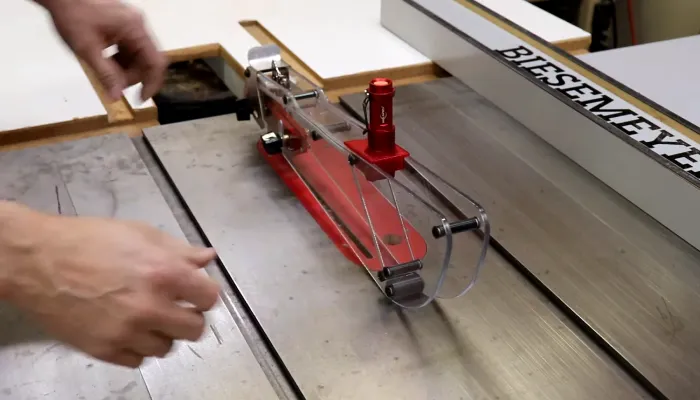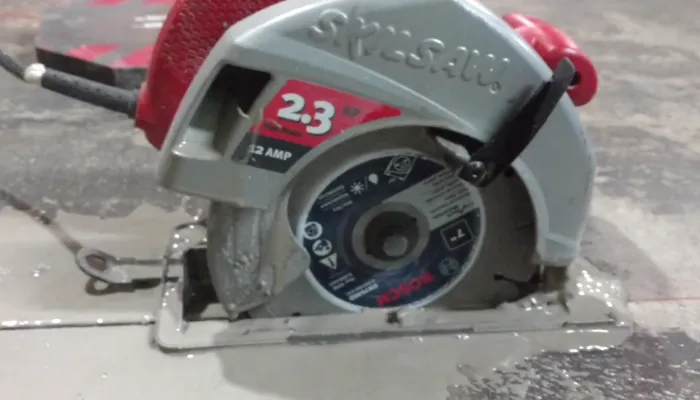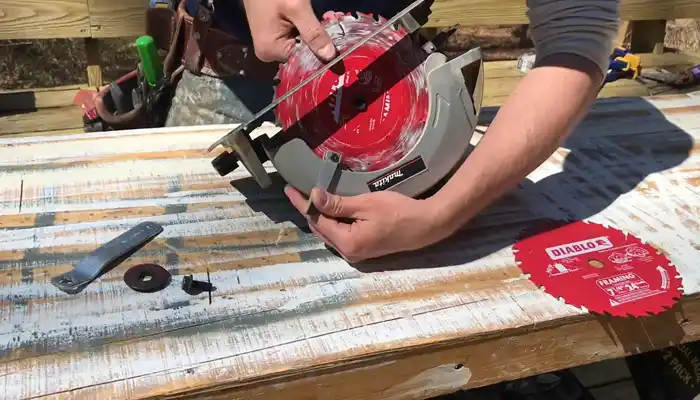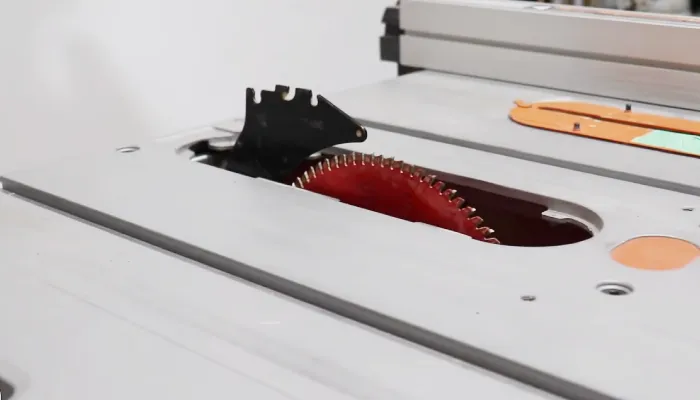Are Circular Saws Dangerous: 5 Associated Risk
Circular saws are versatile workhorses, capable of slicing through various materials in the blink of an eye. However, let me remind you this convenience comes at a cost: the risk of serious injuries. There are thousands of unfortunate accidents caused by circular saws each year.
One of the main risks is the unpredictable nature of kickbacks, which can cause the saw to jerk back and potentially injure the user suddenly. Misuse and slips can also turn precision into peril, leading to accidents and problems. Additionally, body parts like fingers and hands risk being in the line of fire.
Throughout this article, I’ll discuss the associated reasons and risks of using circular saws. I’ll also discuss some safety measures you should take before using a circular saw. Let’s start.
Why Are Circular Saws Dangerous?
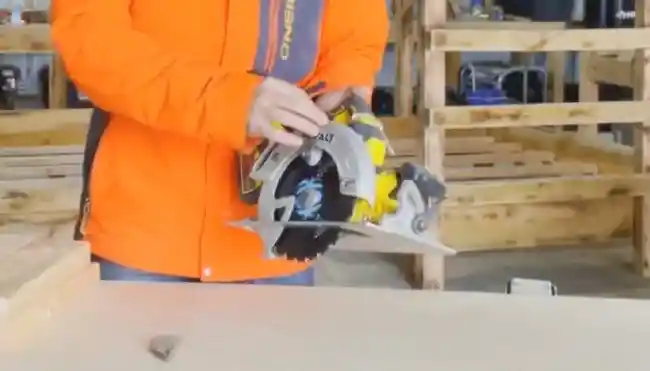
When considering circular saws, I found several associated reasons and risks that make them potentially dangerous.
- Dangerous kickbacks: the unpredictable foe
- Misuse and slips: turning precision into peril
- Flying particles: small, swift, and hazardous
- Body parts at risk: fingers and hands in the line of fire
- Circular saw blade failure: the silent menace
1. Dangerous Kickbacks: The Unpredictable Foe
Kickbacks are an unpredictable threat that can cause serious physical harm. This phenomenon occurs when the cut material binds in the blade, causing the saw to jerk backward with great force. Many power saw injuries are caused by kickbacks, which can have severe repercussions.
2. Misuse and Slips: Turning Precision into Peril
Improper handling and using the saw for unintended purposes can transform this precision tool into a perilous weapon. You must diligently adhere to instructions, wear protective gear, and ensure that workpieces are securely fastened to prevent slips.
Read and understand the manufacturer’s guidelines thoroughly to avoid accidents arising from misuse. Misusing a circular saw can result in severe wounds, such as lacerations or amputations if the blade comes into contact with body parts.
3. Flying Particles: Small, Swift, and Hazardous
The danger of circular saws firsthand, particularly the risks associated with flying particles. Those small, swift, and hazardous wood chips and splinters can cause serious injury. When a circular saw spins at high speeds, it propels these particles into the air with significant force.
Without proper protection, these flying projectiles can find their way into the eyes, causing severe eye irritation or permanent damage. This is why I suggest always wearing safety goggles or face shields when operating a circular saw.
4. Body Parts at Risk: Fingers and Hands in the Line of Fire
Navigating the dangers of circular saws, fingers and hands are at risk as they find themselves in the fire of spinning blades. The proximity of these body parts to the saw blades presents a significant hazard, making it crucial to exercise caution and adhere to proper positioning.
One-handed circular saw operation isn’t recommended due to the increased risk of accidents. Opting for a two-handed approach not only provides better control but also helps to support the tool’s weight during longer cuts.
5. Circular Saw Blade Failure: The Silent Menace
I’ve also found that circular saw blade failure poses a silent menace with various associated reasons and risks.
These blades can fail due to wear on cutting teeth, unsuitable materials, poor surface preparation, or excessive heat buildup. These failures can have catastrophic consequences, leading to serious injuries.
What Safety Measure Should I Take Before Using a Circular Saw to Minimize Risks?
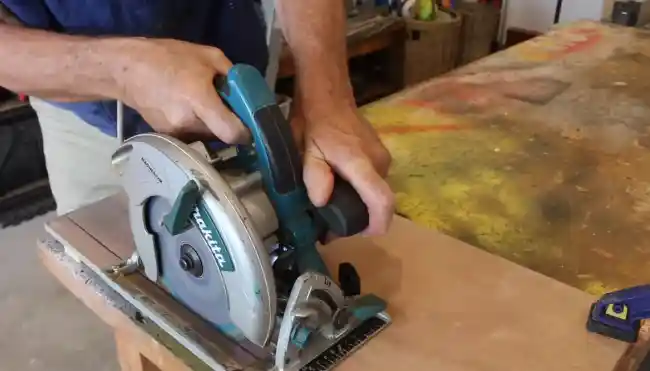
Before using a circular saw, I’ve listed certain safety measures you need to take:
1. Select the Right Circular Saw
I always prioritize the safety of using a circular saw by carefully inspecting the blade and ensuring all safety guards are properly in place. When selecting the right circular saw, consider blade size, power, and features. The blade size should be appropriate for the job, ensuring it can cut through the materials you’ll be working with.
Power is also crucial, as a saw with insufficient power may struggle to cut certain materials. Features like adjustable cutting depth and bevel capacity can enhance the saw’s versatility and efficiency.
2. Inspect the Saw
Before using a circular saw, thoroughly inspect all its components for signs of damage or wear. Start by examining the blade. Look for cracks or missing teeth, as these can cause the blade to become unstable during operation.
Inspect the guards to ensure they’re intact and functioning properly. Guards are designed to protect your hands and prevent kickback, so any damage or malfunctions should be addressed immediately.
Additionally, check the handles for any loose or broken parts, as a secure grip is crucial for maintaining control. Finally, inspect the power cord for any fraying or exposed wires. Damaged cords pose a significant electrical hazard and should be replaced before use.
3. Check Blade Condition
Inspecting the circular saw blade is a crucial safety measure before using a circular saw. Examine the blade for any signs of wear, damage, or dullness. A worn or damaged blade can pose a serious risk during operation, increasing the chances of accidents.
By checking the blade condition, you can ensure that it’s in good working order and capable of delivering clean cuts. Look for any chips, cracks, or missing teeth on the blade that could affect its performance and safety. You should resharpen your saw blades if you notice they are dull.
4. Ensure Guards are in Place
Before using a circular saw, it’s crucial that all safety guards, including the blade guard, are in proper working order. These guards are important safety measures to protect the user from accidents.
The blade guard, in particular, is designed to cover the circular saw’s blade when not in use, preventing accidental contact and reducing the risk of severe injuries. It’s essential to ensure the blade guard is securely placed before operating the saw.
Also, other guards, such as the lower guard and the receiving knife, should function properly. These guards help to prevent kickbacks and keep the material being cut stable during the operation. Neglecting to have these guards in place can lead to serious amputations, so always check and maintain them before using a circular saw.
5. Maintain a Safe Distance During Start-Up
Ensuring proper clearance is essential for safe operation when starting a circular saw. Maintain a safe distance from the cutting path to avoid any potential accidents. Before starting the saw, ensure no body parts are in the blade line. This can help prevent any injuries that may occur during the initial start-up.
6. Secure Workpieces
To ensure the safe operation of a circular saw, I highly recommend always starting by firmly securing the workpieces in place using clamps or other appropriate methods.
This is crucial to prevent the material from moving or shifting during cutting. When the workpiece isn’t properly secured, it can lead to kickback, where the blade grabs the material and forcefully throws it back toward the operator. This can result in serious physical harm.
You can maintain stability and control while cutting using clamps or other methods to secure the workpiece. Ensure that the clamps are tightened securely and positioned to allow the saw to move freely without obstruction. Ensure the material being cut is stable and won’t move during the cutting process.
7. Unplug the Saw After Each Use
After firmly securing the workpieces, I always advise unplugging the saw as an essential safety measure after each use. Disconnecting the power source eliminates the risk of accidental starts, reducing the chances of injuries.
Store the saw in a secure location, away from children and unauthorized users, minimizing the risk of accidents. Unplugging the saw prevents potential electrical hazards, such as shocks or fires, if the power source is connected.
8. Utilize Proper Cutting Techniques
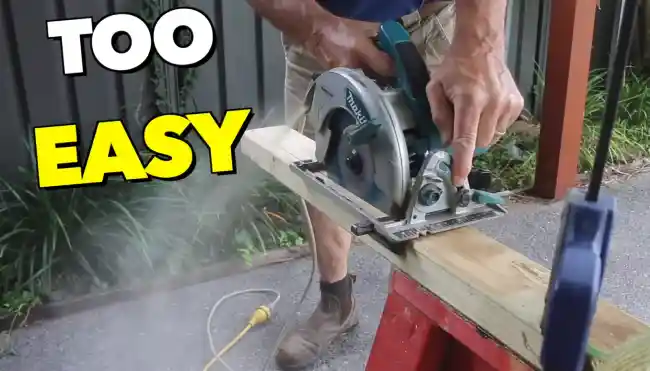
Before using a circular saw, prioritize proper cutting techniques to ensure safety and minimize the risk of accidents.
One important safety measure is to cut slowly and steadily, allowing the blade to do the work without forcing it. This helps maintain control over the saw and reduces the chances of kickback or the blade getting stuck.
Avoid over-tightening the blade-locking nuts, as this can cause unnecessary stress on the blade and increase the likelihood of accidents. Additionally, refrain from using vibrating or unsafe saws, as these can lead to unstable cutting conditions and potential accidents.
9. Avoid Cutting Above Shoulder Height
Avoid cutting above shoulder height to ensure safety and reduce the risk of accidents when using a circular saw. Cutting above shoulder height can lead to loss of control and increase the chances of the saw blade binding or kicking back.
To prevent this, maintain a comfortable and controlled height while operating the saw. By keeping the saw at a level that allows for stability and proper control, you can minimize the risk of accidents and maintain a safe working environment.
Also, using proper cutting techniques, such as a guide or fence, can enhance safety and accuracy when using a circular saw. Always prioritize safety and take necessary precautions before operating any power tool.
When should you never use a circular saw to reduce hazards?
Circular saws are designed for precise and controlled wood, metal, and plastic cutting. However, I never recommend using a circular saw to cut logs, roots or to trim trees and shrubs as it poses significant hazards.
They aren’t equipped to handle the challenges presented by cutting logs, which can be large and unwieldy, or roots, which can be tough and unpredictable. Attempting to use a circular saw for these purposes can result in kickback, where the blade binds, and the saw is forcefully thrown back towards the user.
Also, the blade may become stuck or damaged, leading to potential injury or damage to the tool. Use the right tool for the job to ensure safety and optimal results.
Stay Safe and Succeed: Understand the Dangers of Circular Saws
Acknowledging the potential dangers of using a circular saw is crucial, as they can be as sharp as a double-edged sword. When you understand the risks I discussed above, you can navigate your workshops with heightened awareness, creating a culture of safety and responsibility that prevents accidents.
However, beginners can safely operate this powerful tool by taking necessary safety precautions and following proper guidelines. Knowledge and respect for the tool’s capabilities are key to ensuring a safe and successful woodworking experience.



